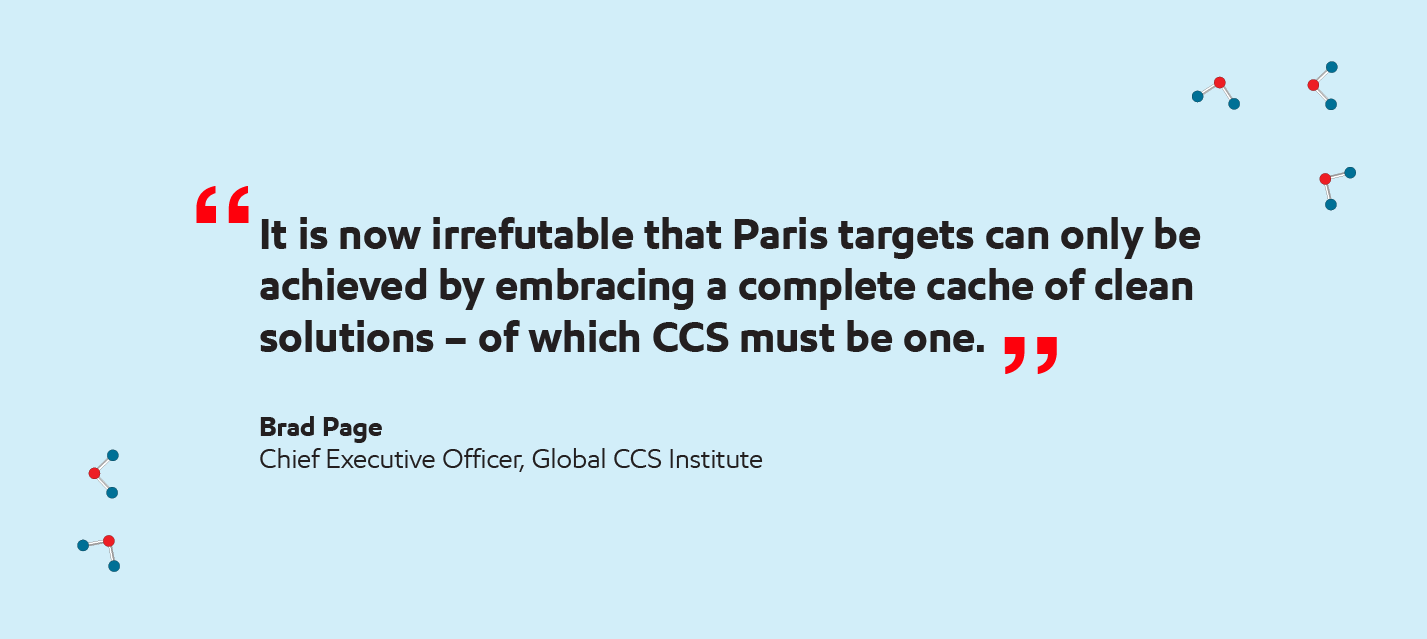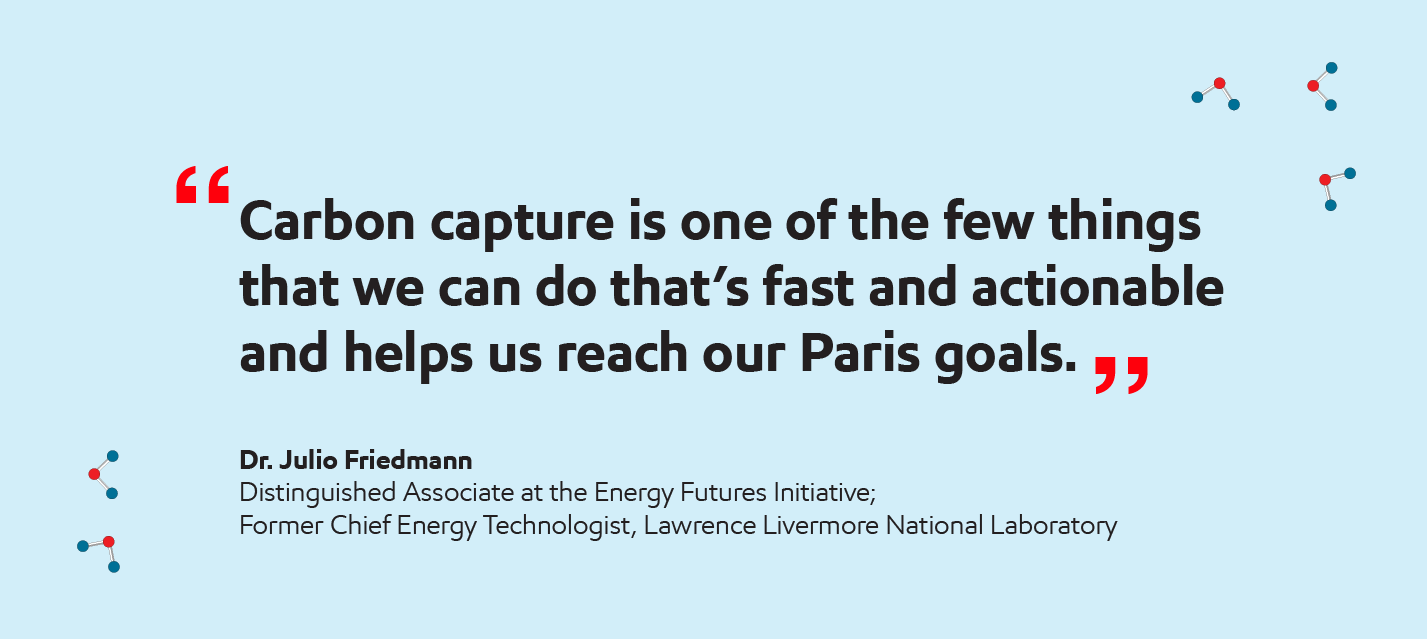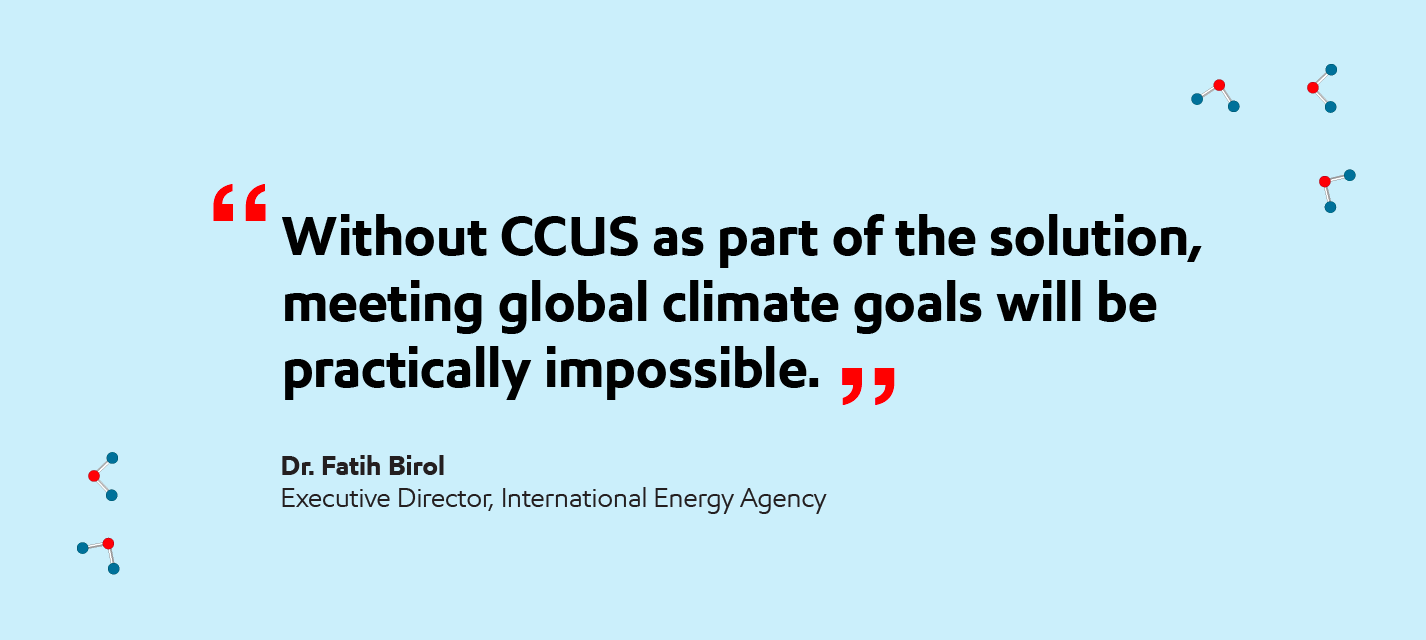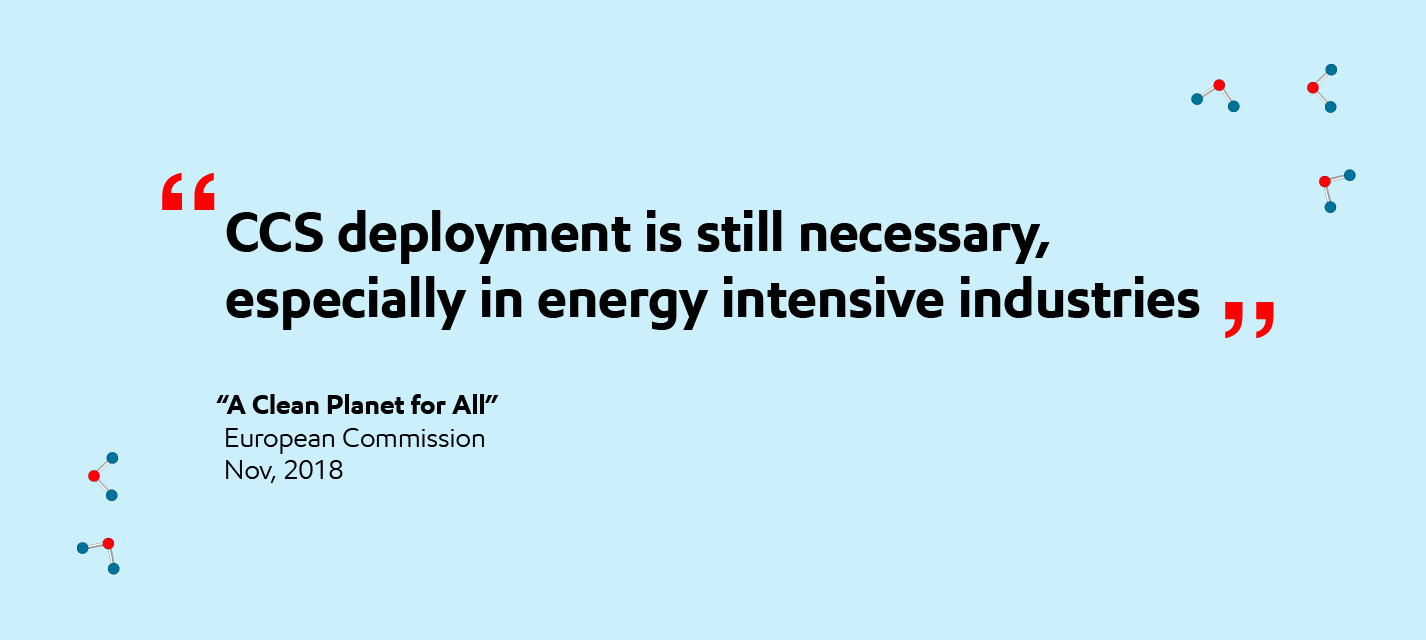Carbon capture and storage (CCS) will be a key technology in managing the risks of climate change. That’s why ExxonMobil is working to develop new carbon dioxide (CO2) capture technologies.
But ExxonMobil isn’t the only one that thinks CCS is essential – so do leading scientists and policy makers. Scroll down to read firsthand why, when it comes to climate risks, they think carbon capture technology is so important.
CCS gets us to Paris
Adopted by 195 countries at the United Nations Climate Change Conference in 2015, the Paris Agreement intends to limit the world’s average temperature rise to below 2 degrees Celsius above pre-industrial levels. According to the Intergovernmental Panel on Climate Change’s (IPCC) analysis, which informed the targets outlined in the Paris Agreement, meeting those goals will require a portfolio(1) of solutions that includes CCS(2).
Scalable engineering
CCS is one of the few human-engineered technologies with the potential to stabilize(3) global emissions. Dr Julio Friedmann(4) anticipates that, once fully developed, CCS could capture up to 20 percent(5) of global carbon emissions. Some of these emissions could be safely stored underground. Some could also be transformed into commercial products.
More than carbon neutral
Like Dr Friedman, Dr Jennifer Wilcox also advocates for a portfolio approach. She says energy efficiency technologies like LED lamps could help avoid releasing new carbon dioxide emissions.
On a parallel track, scaled-up approaches such as bioenergy with carbon capture and direct air capture – each coupled to permanent storage – could achieve negative emissions by removing CO2 from the atmosphere(6). Negative emissions represent a scenario where preexisting CO2 molecules are pulled from the atmosphere. This is a step further from carbon neutrality, which maintains a net zero add to current CO2 levels.
It’s not a moon-shot solution
Indeed, while CCS is not the magic bullet, Dr. Sally Benson(7) who oversees groundbreaking capture and storage research, that meeting the world’s climate goals takes an “all of the above” approach that includes renewables as well as CCS.
Now is the time to do it
A number of countries, including the U.S., Japan and Norway, are already developing or operating full-scale CCS plants. A lot still needs to be done, but as highlighted(8) by the International Energy Agency, one of the world’s leading energy policy organizations, climate goals won’t be achieved without CCS.
Deployment is necessary
ExxonMobil has a working interest in more than one-fifth of the world’s carbon capture capacity – and we’re actively looking to expand that.
We’ve already partnered with FuelCell Energy Inc. to develop CO2 capture technologies using carbonate fuel cells; with Global Thermostat to develop a system which vacuums CO2 right out of the air; and with other partners to create the pioneering Sleipner CCS facility in Norway, which has captured and stored 20 million tonnes of CO2 since 1996.
You can find out all about how carbon capture and storage works here – in our film.
Sources and further reading:










